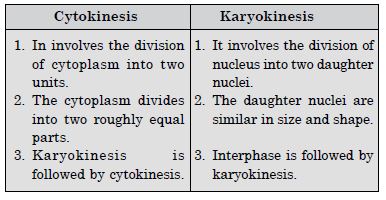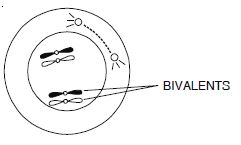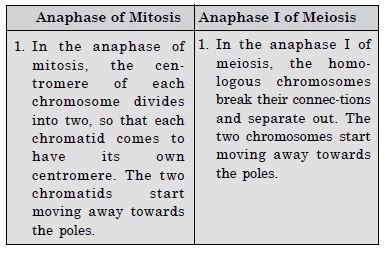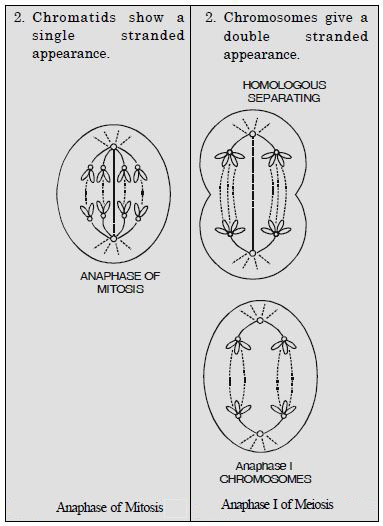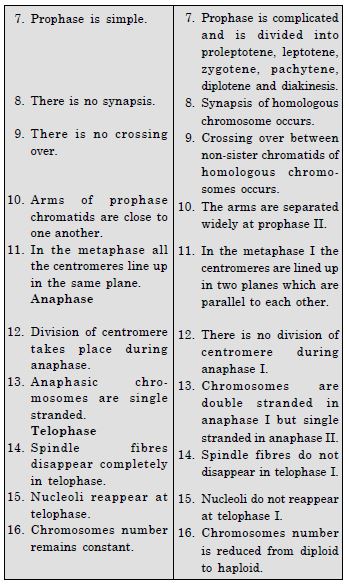Enhance your performance with free NCERT Solutions available on the Aasoka platform. In order to score good grades, you can access these solutions anytime anywhere, and study at your leisure. The NCERT Solutions for Class 11 are designed by subject matter experts after thorough research and as per the latest CBSE syllabus. Students are offered quality educational resources to kick-start their learning process.
The chapter of Biology Class 11, “Cell Cycle and Cell Division” includes the M phase, meiosis and its significance, cell cycle, mitosis and its significance, characteristics of cells, and much more.
Question 1:
What is the average cell cycle span for a mammalian cell ?
Answer:
The average cell cycle span for a mammalian cell is approximately 24 hours.
Question 2:
Distinguish cytokinesis from karyokinesis.
Answer:
Distinguish cytokinesis from karyokinesis.
Question 3:
What is G0 (quiescent phase) of cell cycle ?
Answer:
Some cells in the adult animals do not appear to exhibit division (e.g. heart cells) and many other cells divide only occasionally, as needed to replace cells that have been lost because of injury or cell death. These cells that do not divide further exit G1 phase to enter an inactive stage called quiescent stage (G0) of the cell cycle. Cells in this stage remain metabolically active but no longer proliferate unless called on to do so depending on the requirement of the organism.
Question 4:
Why is mitosis called equational division ?
Answer:
Mitosis is a type of cell division in which chromosome replicate and become equally distributed both quantitatively and qualitatively into two daughter nuclei so that the daughter cells come to have the same number and type of chromosomes as are present in the parent cell. It is therefore, called equational division. It keeps the daughter cells to remain identical to each other as well as to their parental cell in genetic constitution.
Question 5:
Name the stage of cell cycle at which one of the following events occur:
- Chromosomes are moved to spindle equator.
- Centromere splits and chromatids separate.
- Pairing between homologous chromosomes takes place.
- Crossing over between homologous chromosomes takes place.
Answer:
- Chromosomes are moved to spindle equator-Metaphase
- Centromere splits and chromatids separate -Anaphase
- Pairing between homologous chro-mosomes takes place—Zygotene
- Crossing over between homologous chromosomes takes place—Pachytene.
Question 6:
Describe the following briefly :
(a) synapsis (b) bivalent (c) chiasmata.
Draw a diagram to illustrate your answer.
Answer:
(a) Synapsis. The process of pairing together of homologous chromosomes is called synapsis. The pairing is such that the genes of the same character present on the two chromosome come to lie exactly opposite to each other. It occurs during zygotene stage of Prophase I of meiosis.
Synapsis.
(b) Bivalent. The pair of chromosomes formed due to synapsis during zygotene of prophase I of meiosis are referred to as bivalents.
Question 7:
How does cytokinesis in plant cells differ from that in animal cells ?
Answer:
Differences between cytokinesis in plants and animals
Question 8:
Find out where the four daughter cells from meiosis are equal in size and where they are found unequal in size.
Answer:
The four daughter cells formed during meiosis are equal in size in case of spermatogenesis where four equal size spermatozoa are formed whereas in case of oogenesis, one large sized ovum and three small sized polar bodies are formed and, so are unequal in size.
Question 9:
Distinguish anaphase of mitosis from anaphase I of meiosis.
Answer:
Differences between anaphase of mitosis and anaphase I of meiosis.
Question 10:
List the main differences between Mitosis and Meiosis.
Answer:
Differences between mitosis and meiosis
Question 11:
What is the significance of meiosis ?
Answer:
Significance of Meiosis
- Formation of Gametes. The meiosis (reductional division) produces haploid gametes for sexual reproduction.
- Maintenance of chromosome number. Meiosis halves the chromosome number in gametes so that fertilization may restore the original diploid number in the zygote.
- Introduction of Variations. Meiosis provides a chance for the formation of new combination of chromosomes. It brings about variations which cause evolution. The new combinations are produced (a) by crossing over in prophase I and by (b) random distribution of paternal and maternal (homologous) chromosomes between the daughter cells in anaphase I.
- It avoids the multiplication of chro-mosomes and thus maintains the stability of the species.
- Evidence of Basic Relationship of Organisms. Meiosis, being essentially similar in all sexually reproducing organisms, offers further evidence of the basic relationships of living organisms.
Question 12:
Discuss with your teacher about
- haploid insects and lower plants where cell division occurs, and
- some haploid cells in higher plants where cell division does not occur.
Answer:
- In case of honey bees, both haploid and diploid individuals are found and such a state of occurrence is called haplodiploidy.
- Pollen grains
Question 13:
Can there be mitosis without DNA replication in ‘S’ phase ?
Answer:
There cannot be mitosis without DNA replication in the S phase because mitosis is an equational division where the DNA content is doubled prior to division and then distributed equally in the two daughter cells after division. This maintenance of DNA content in the daughter cells is only possible when there is an initial doubling.
Question 14:
Can there be DNA replication without cell division ?
Answer:
Yes, there can be DNA replication without cell division as occurs in polytene chromosomes of Drosophila larvae. In this type of division, the DNA keeps on duplicating with the formation of multiple strands. These are giant, banded chromosomes derived from repeated duplication of the chromosome without any separation taking place and consists of upto 10,000 and sometimes even more DNA helices.
Question 15:
Analyse the events during every stage of cell cycle and notice how the following two parameters change
- number of chromosomes (N) per cell
- amount of DNA content (C) per cell
Answer:
Before the start of the cell division there are marked changes that occur in it. In the preparatory phase i.e. the Interphase, various cellular modifications occur. The most important of these take place in the S or synthesis phase of Interphase.
Here, intense DNA synthesis takes place such that the amount of DNA doubles. If the initial amount of DNA is denoted as 2C then it increases to 4C. However there is no increase in the number of chromosomes. If the cell had diploid state with 2n number of chromosomes initially then even at the end of
S-phase the number of chromosomes remains the same i.e. 2n.

